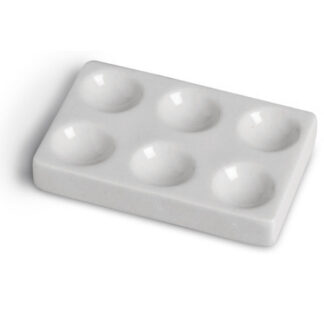LSD Test Kit Description
Use this LSD testing kit to test for the presence of LSD. It’s a quick and reliable LSD tester that can be used to test blotter paper, liquid LSD, and geltabs,
The chemicals required to synthesize LSD are hard to come by. That’s why blotters often don’t contain LSD at all. Instead, they’ll contain psychedelic amphetamines like DOB, DOI, 2C-I-NBOMe, which can have very harmful side effects.
Our LSD Test Kit contains what is also known as the improved Ehrlich test, “improved hallucinogen reagent“, “Modified DMAB test”, and “Ehrlich 2.0”. It has a longer shelf life, produces less fumes, and works just as well as classic Ehrlich.
This test kit detects drugs in the “indole” class, such as LSD, DMT, 5-MeO-DMT, 5-MeO-DIPT, Psilocybin, Psilocin, AMT, and others.
A color reaction chart, as well as a multi-use testing vial, are also included with our LSD drug test kit.
| LSD Test Kit Includes | |
|---|---|
Basic kit:
|
Complete package: |
LSD Test Kit Package Video Demo (LSD & 1P-LSD)
Using the LSD Test Kit Package to Test for LSD
 |
Step 1) Start with the Ehrlich test. If your sample doesn’t yield a purple color over time (20 minutes or more) with this test, what you have is not LSD. No further testing is required. If your sample does turn purple, proceed to step two.
Ehrlich reagent: This is the main test kit for LSD. It detects the presence compounds called indoles, which helps you avoid harmful “NBOMEe” often compounds missold as LSD. Product details: Ehrlich reagent » |
 |
Step 2) Next, test your sample with the Hofmann test if your kit came with it. If the color reaction between your sample and the testing liquid doesn’t darken over time (usually a navy blue), what you have is not LSD. Note that for this test, the reaction time will be slower than the Ehrlich test. It can take over an hour to see a color change.
Hofmann reagent: This test produces distinct results with LSD. It’s also a good test for DMT. Product details: Hofmann reagent » |
Test Kit Instructions
- Put a small sample into the testing vial. If you’re testing paper, cut off a corner. Geltabs (small squares of gelatin containing LSD) can be tested by placing a drop or two of the test liquid on a very small amount of the geltab. Larger gelatin samples (such as jello squares) can’t be tested. Brownies, sugar cubes, cookies etc. can’t be tested with the kit because they contain too much foreign material. Your sample should be about this size: (●)
- Hold the testing vial above the open plastic jar, so that if a drop misses the vial, it will land in the jar. Using a white ceramic testing tray can help you see the results more easily.
- Place 1-2 drops of the testing liquid from the dropper bottle onto the sample. DO NOT let the sample touch the bottle nozzle, or the reagent will get contaminated!
- Watch the color change over 30 sec. – 3 min. If you’re testing blotter LSD or geltabs, you’ll likely see less vivid colors compared with testing something more concentrated, like a crystal. You might have to give it some time to see a color change (around 3 minutes). Yet, you will eventually see a color change if you have LSD. 1P-LSD will react slowly with this test. You may only notice a color change after an 1 to 3 hours, and the color may be more subtle than it is with “regular LSD”.
- Compare the reaction color with the color chart provided.
- Tightly close the dropper bottle. If you’re using more than one testing fluid, make sure you only open one bottle at a time. If you accidentally switch caps, the testing liquid will get contaminated and ruined.
- Thoroughly wash the testing vial after each use.
- Store the dropper bottle in a cold place to maximize shelf life, like a freezer.
LSD Testing Tips
- If you’re testing blotter LSD or geltabs, you’ll likely see less vivid colors compared with testing something more concentrated, like a crystal. You might have to give it some time to see a color change (around 3 minutes). Yet, you will eventually see a color change if you have LSD.
- Geltabs (small squares of gelatin containing LSD) can be tested by placing a drop or two of the test liquid on a very small amount of the geltab. Over time, a color reaction will appear if LSD is present. Larger gelatin samples (such as jello squares) can’t be tested. Brownies, sugar cubes, cookies etc. can’t be tested with the kit because they contain too much foreign material.
- The testing vial that comes with the kit helps prevent your skin from contacting the reagent while testing. Extra testing vials are also great for when you’re on the go. But using a white ceramic testing tray can help you see the results more easily.
- 1P-LSD will react slowly with this test. You may only notice a color change after an 1 to 3 hours, and the color may be more subtle than it is with “regular LSD”.
LSD Color Reactions Chart
You should expect the following color reactions with LSD and the following test kits:
Notice
While reagent testing is the best method for on-the-spot testing, it is never 100% conclusive. There are many variables that can impact what the reaction looks like. Lighting, impurities, and unwanted substances in your sample may all play a role.
No drug (whether legal or illegal) is completely safe, we recommend avoiding all recreational drug use.









